I visited a car-free neighborhood in Arizona and was surprised that it felt 15 degrees cooler than the surrounding blocks
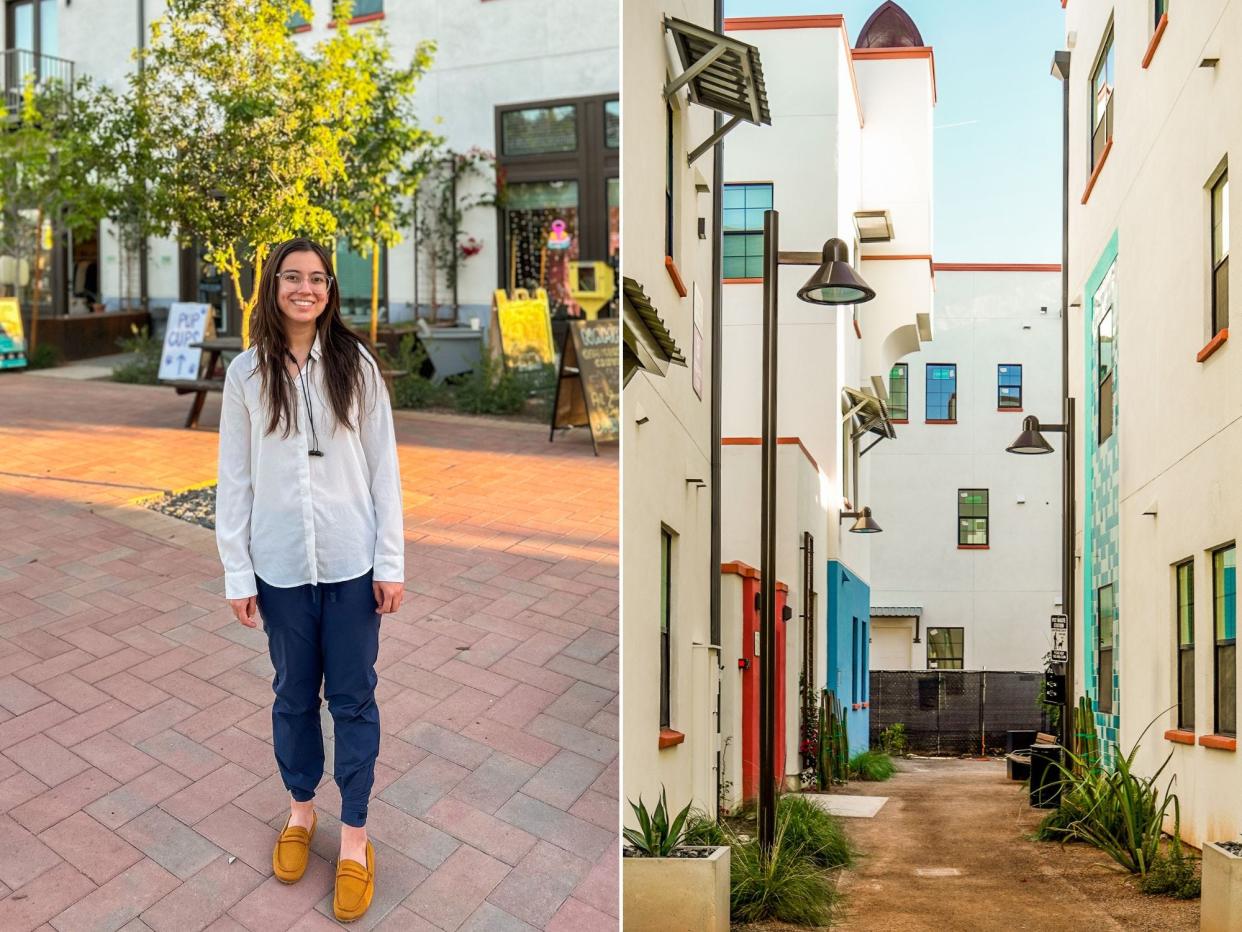
Culdesac is a car-free neighborhood outside of Phoenix, Arizona, the hottest city in the US.
Culdesac was built to combat the summer temperatures reaching above 110 degrees Fahrenheit.
The block was paved without asphalt, designed to maximize shade, and painted white to reflect heat.
Arizona summers are hot — sometimes dangerously so. Phoenix is the hottest city in the US, with summer temperatures regularly exceeding 110 degrees Fahrenheit. In 2022, nearly 400 people in Maricopa County — which includes Phoenix, Tempe, Scottsdale, and other surrounding cities — died from heat-related conditions, according to Maricopa County Public Health.
The Arizona heat can also cause severe burns from contact with outdoor surfaces that can be as scorching as 180 degrees Fahrenheit.
Enter Culdesac, a car-free community in Tempe that is combatting the area's heat problem with a neighborhood built to cool.
The neighborhood, where cars are banned and residents get around with public transit and electric bikes, opened in 2023. A company representative told Business Insider that the 17-acre block houses 200 people, but the company is aiming for 1,000 residents.
I recently got a tour of Culdesac, where I anticipated open street paths, shops, and amenities residents could walk to.
And I found all of that. But I didn't expect to feel cooler on the block than on the surrounding streets.
During my tour, I learned that Culdesac feels about 15 degrees colder than the city's temperature, thanks to initiatives by the housing startup during the building process.
Culdesac is a car-free neighborhood that feels cooler than the surrounding streets.
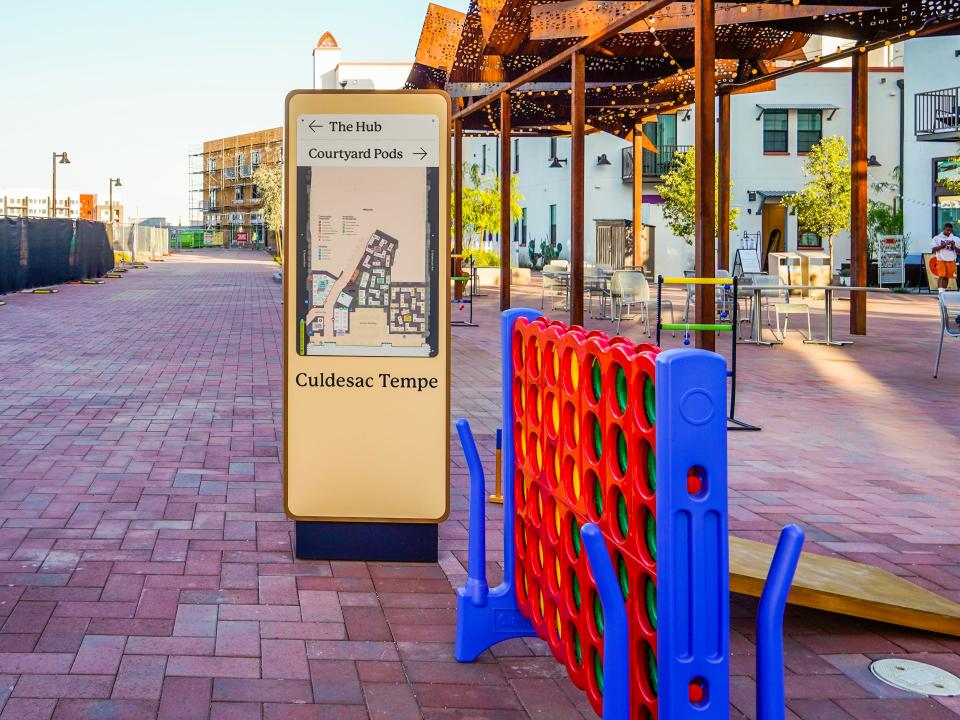
When I arrived at Culdesac on an April afternoon, the temperature was about 90 degrees in Tempe, Arizona. But it didn't feel that way.
CEO, cofounder, and Culdesac resident Ryan Johnson — who hasn't owned a car in 14 years — told BI that Culdesac feels cooler than the rest of Tempe for four reasons: pavement materials, building layout, landscaping, and color.
This is in part because there's no asphalt anywhere on the block.
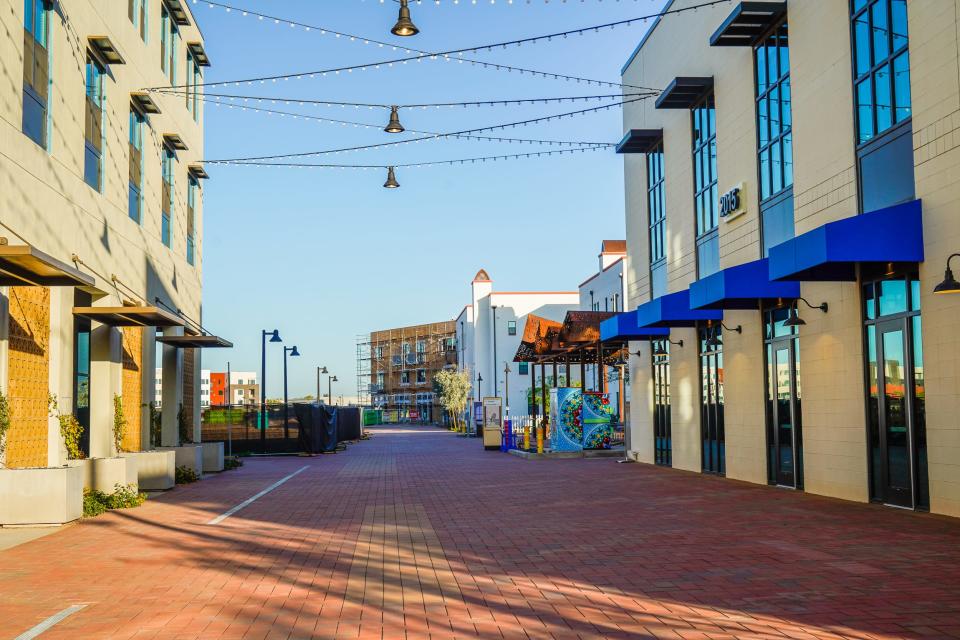
The ground at Culdesac contributes to its cooler temperatures. Unlike most urban areas, the neighborhood was built without asphalt, a paving material that soaks up the sun's heat.
While developing the block, Culdesac used alternative materials like pavers and decomposed granite to combat high temperatures and absorb rainwater that would otherwise heat up, the Culdesac representative told BI. He added that the temperature measures 30 degrees Fahrenheit cooler than the asphalt on surrounding streets.
The neighborhood's layout was designed to maximize shade.
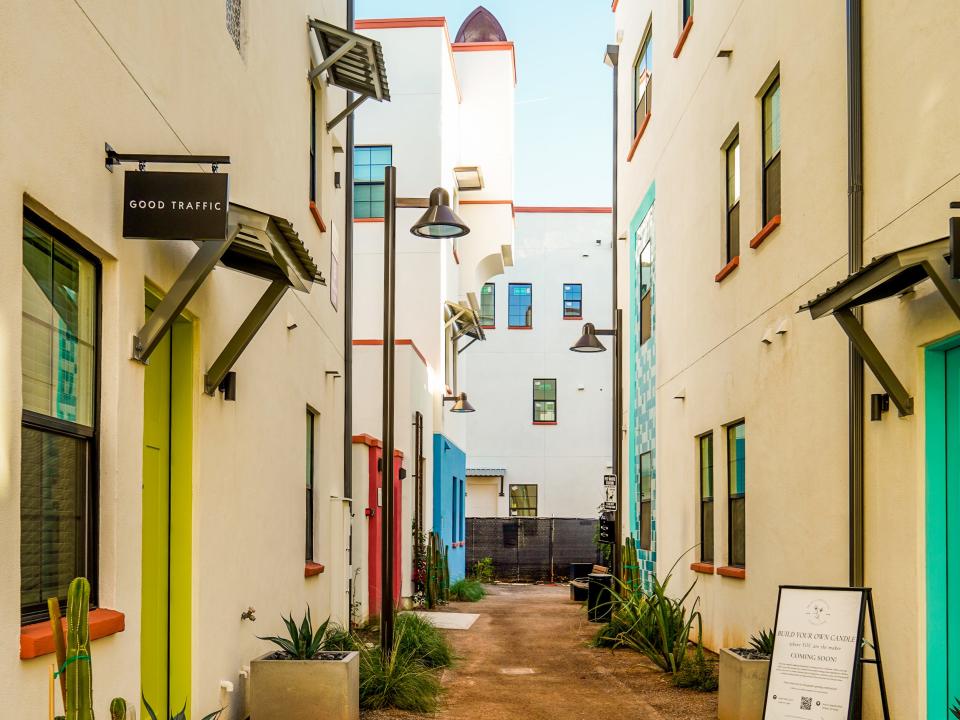
According to Culdesac's website, the neighborhood can feel 10-15 degrees cooler than the temperature because there's so much shade.
The residential buildings are positioned close together to add as much sun coverage as possible to the block.
And in the plaza, where the pathways are wider, there's a shaded canopy sculpture created by artist Matthew Salenger.
Culdesac thoughtfully landscaped the block to provide even more sun coverage.
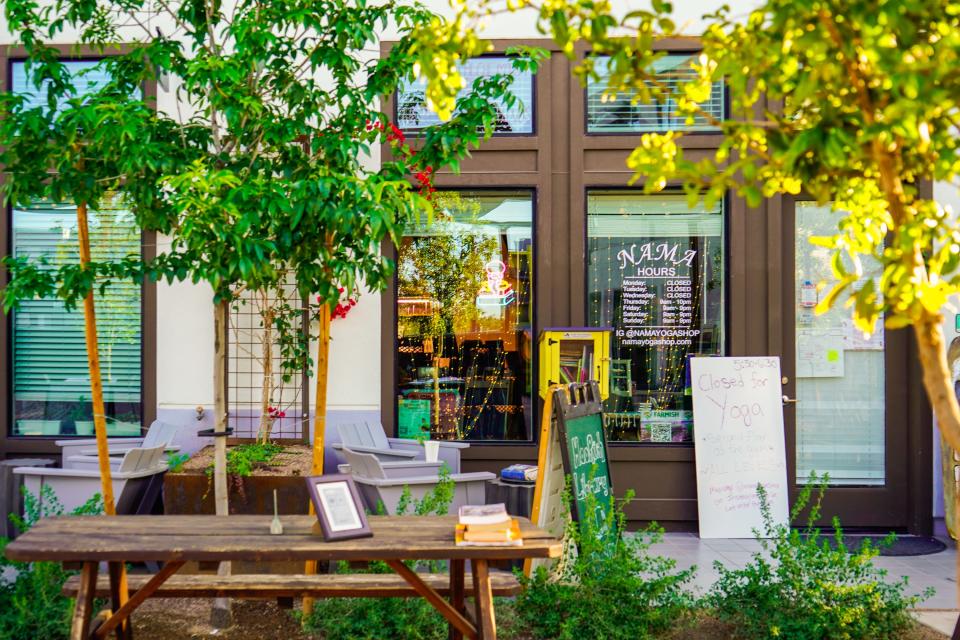
More than 50% of Culdesac is open space full of plants that add shade. The community carefully selected trees that provide sun coverage, opting for palo verde — ideal for shade, according to Desert Sun — over palm trees, which dot many streets in the county without blocking much of the sun.
The trees shade the plaza and courtyards between residential buildings.
The buildings' bright colors reflect sunlight.
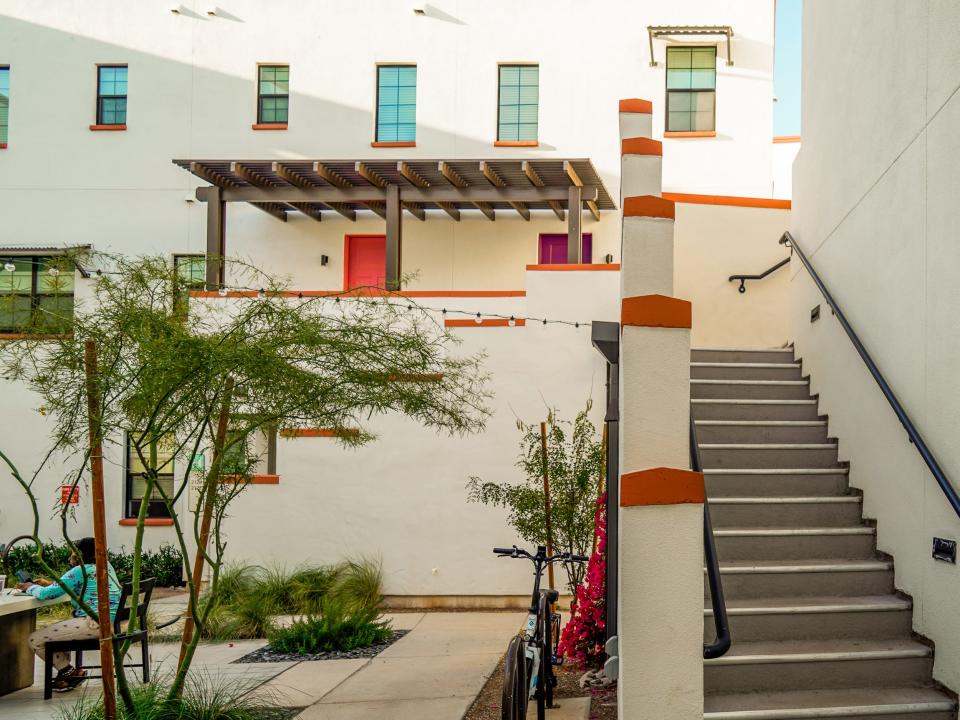
Culdesac selected white paint for its buildings because, unlike darker colors, the sun's rays bounce off white surfaces, resulting in the buildings absorbing less heat.
Reflecting the heat also makes the buildings more energy efficient because less air conditioning is required to cool them.
To me, Culdesac made the hot county feel livable.
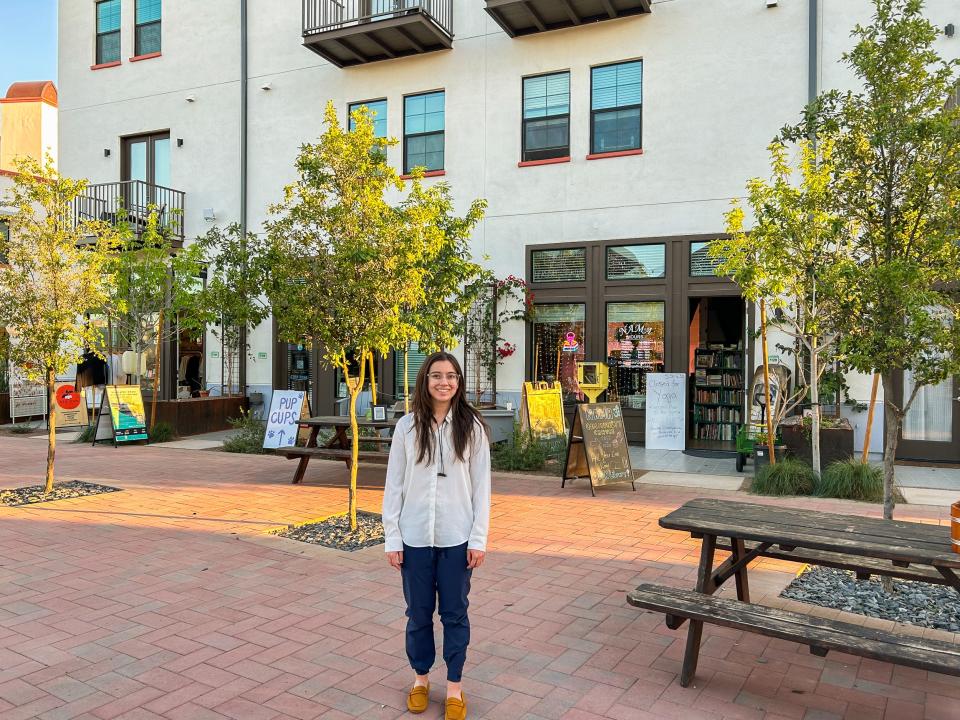
I love Arizona. It's where I was born, and although I don't remember living there, visiting the beautiful state with its mountains, canyons, and desert landscapes over the years has made me wonder about moving there someday.
The idea of scorching summers has always given me pause, though. But maybe I could live just outside the hottest city in America if I moved to a neighborhood like Culdesac.
Read the original article on Business Insider

 Yahoo News
Yahoo News 
